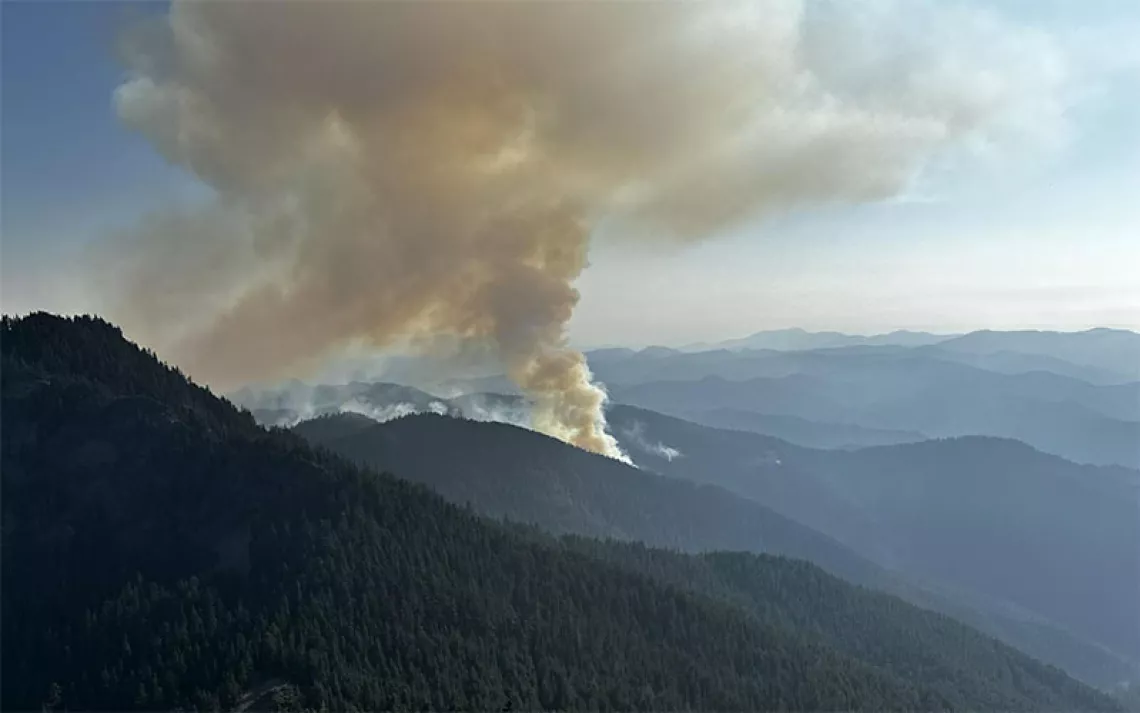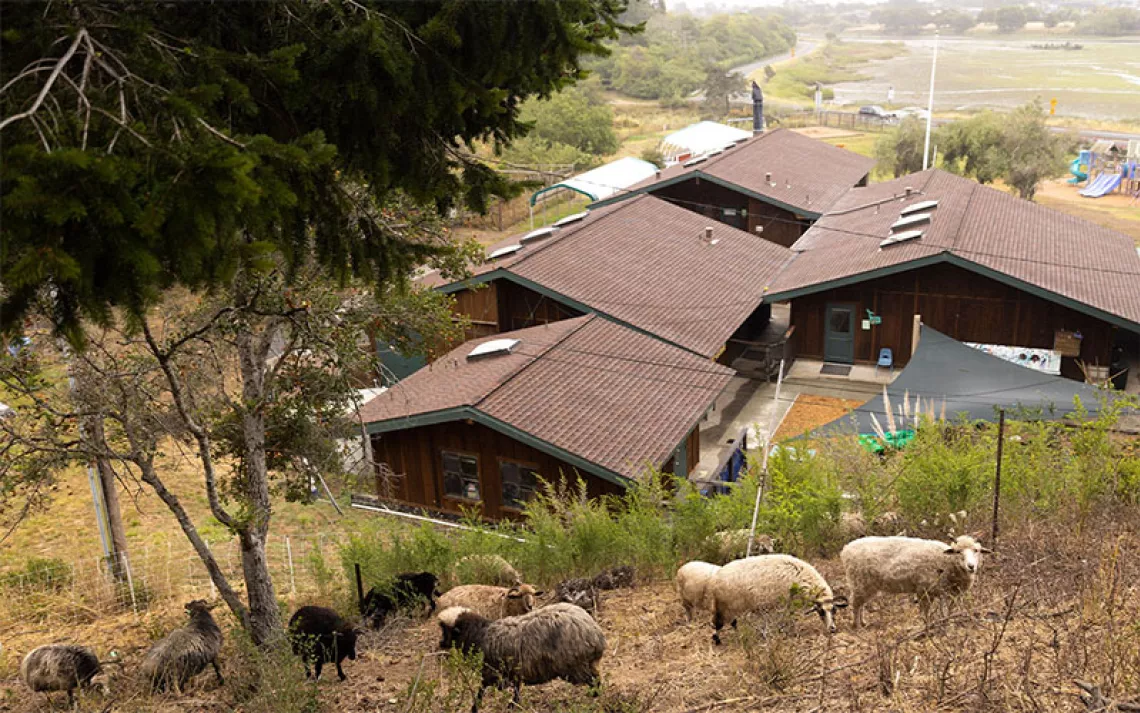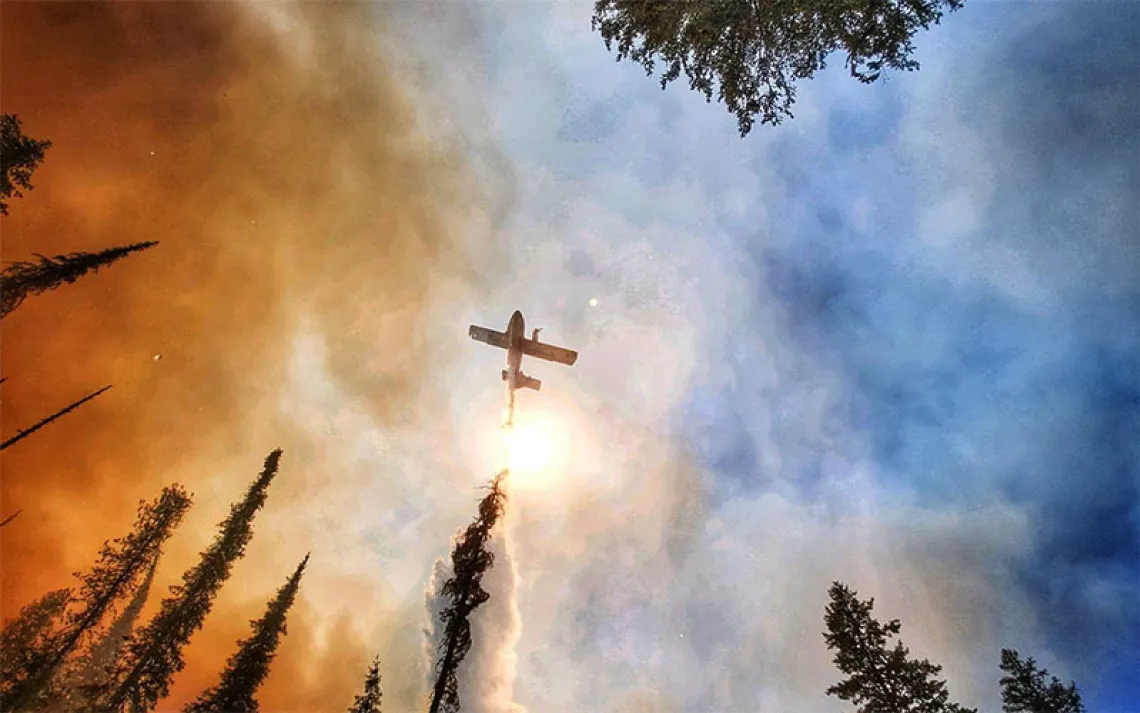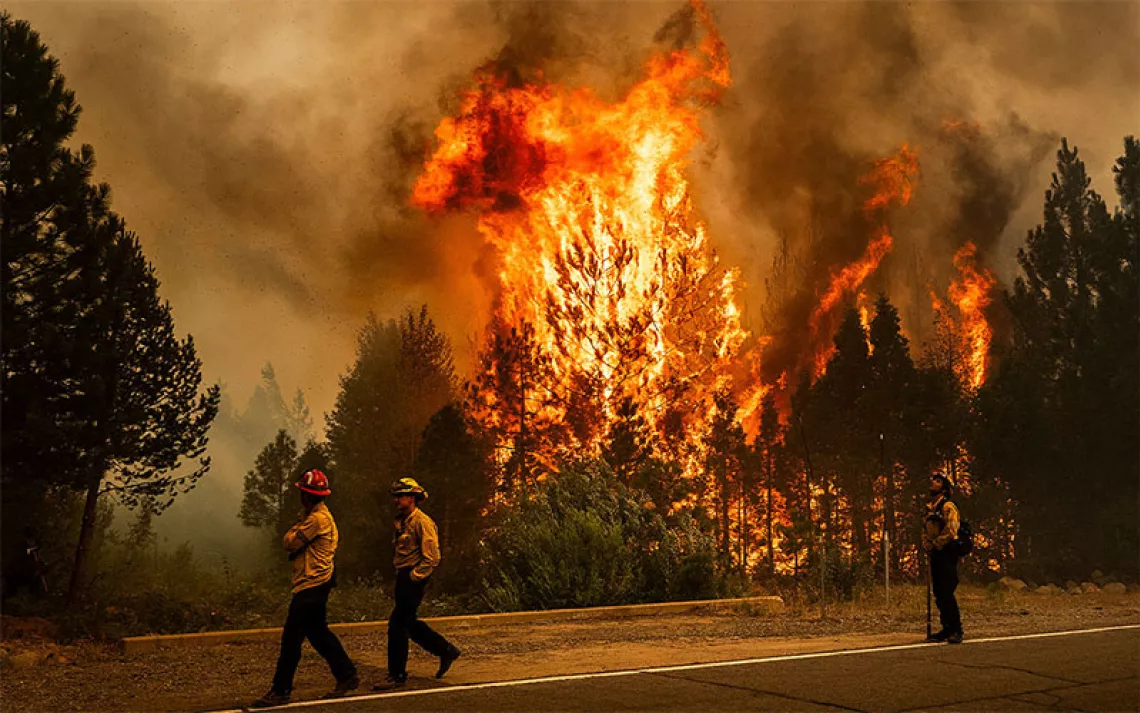Wildfires Burning Through the West Are Terrifying—and Necessary, Too
Fire is not destruction; it’s renewal.
Photos by Aaron Teasdale
The moon rose red over the mountains. At the foot of the Swan Range, beneath millions of trees, the lights of Seeley Lake, Montana, sparkled in the dark. Through my binoculars, I could see streetlamps, porch lights, a locally owned lumber mill with pile after pile of freshly cut logs. Tilting up, I scanned a hillside aflame and trees torching in the night, the sky aglow.
This was a few weeks ago, August 15, and the wildfire, the Rice Ridge Fire, was one of 60 burning in the American West. At the time, there were a half dozen major fires within a 30-mile radius of my home in Missoula, Montana, and the Marlboro-like air quality left my children unable to play outdoors.
If that sounds terrible, things have only gotten worse. There are now at least 81 major fires burning across the West, including burns in Montana, Idaho, Washington, Oregon, and California.
And it’s only the beginning. As the climate warms, large fires will increase sixfold in parts of the West, and the annual burned acreage in the Pacific Northwest will quadruple by 2080, according to new studies by the National Oceanic and Atmospheric Administration and the National Climate Assessment. A recent U.S. Forest Service report says fire seasons are already 78 days longer than they were in 1970.
I watched the Rice Ridge Fire from, of all places, an 85-year-old fire lookout tower. Once part of a network of thousands of towers across the West, they were sentinels for the largest fire-suppression network the world has ever seen. For a century it worked remarkably well—too well.
It turns out we were doing fire control all wrong. Scientists now understand that western forests evolved with fire and require it to be healthy. Fire isn’t destruction; it’s renewal. The mosaic of forest types left behind in fire’s capricious path create stronger, more diverse ecosystems rich with life. Western forests need fire like rainforests need rain.
First woodpeckers, beetles, and mushrooms produce an immediate post-fire explosion of life. As wildflowers, shrubs, and young trees return, so do butterflies, bluebirds, moose, and lynx. The forest ages, providing denning sites for countless animals, until the cycle begins again. Every species in the West has adapted to wildfire over the millennia. Every species but one: modern Homo sapiens.
I spent two days in the Double Arrow Lookout, watching the fire and efforts to contain it, and it felt like trying to stop a hurricane. Planes scooped water from Seeley Lake’s eponymous pool and dropped it on the advancing flames. Huge, double-rotored helicopters did the same with giant bags of toxic slurry. During that same time, a firefighter friend was at the Morrell Lookout, visible to me across the valley on a peak overlooking town. He sent me photos of crews valiantly fighting flames. Still the fire advanced.
In dry years—which are always fire years—federal and state governments can spend over $2 billion on firefighting. For the first time in its history, the Forest Service now spends more than 50 percent of its budget fighting fires—often cannibalizing money set aside for prescribed burns and other restoration efforts that would make fires less severe. And not all the costs are financial. Two young firefighters recently died on the job in Montana, both fighting flames in wild country far from homes.
Recent generations of Americans have gotten used to living without wildfire, much like we’ve grown accustomed to living without large carnivores. Our baselines shift and we think, “This is normal.” Except it’s not. An average fire season in the 1980s charred 2 million acres. Today it’s 5 million acres. Before European settlement, scientists estimate, it was 20 to 50 million.
As we get reacquainted with wildfire, the residents of Seeley Lake are the front line. A decade ago, the Jocko Lakes Fire burned 36,000 acres and threatened the town from the west, burning to the doorstep of the Double Arrow Lookout. Today, the view west of the tower is stacked hills of blackened trees. Most of that land had been aggressively logged in years prior to the fire, putting the lie to calls for more aggressive forest management to prevent fires. Scientific studies have repeatedly shown logging does not reduce wildfires. (Though, according to wildland firefighters I’ve spoken with, logging can make it somewhat easier to control a fire once it’s started, making selective or restorative logging near towns a smart move.)
When I drove through Seeley Lake on my way to the tower, the town was teeming with firefighters. A tent city of fire crews sprawled on its outskirts. Flags flew at half mast for fallen firefighters. Airplanes buzzed the skies. Smoke choked the air, and flames were visible above town.
Suddenly it wasn’t just a story in the news anymore. It was a real town, with real people and real homes and real families and an out-of-control wildfire two miles away. It felt like a tourist burg-cum-war zone. Which is not a great selling point in peak tourist season here in the Swan Valley, where Seeley Lake and other communities struggle with the diminishment of logging jobs. With smoke choking their children and flames threatening their homes, the ecological benefits of wildfire are a hard sell.
An outraged resident of Seeley Lake sent a letter to the local paper in which he argued for more logging, fire suppression, and political engagement. Without changes, he said, “we’ll forever have summers of smoke.”
He’s right—though not in the way he might think, because we’re going to have more fire whether we change or not. Much like people adjusting to the return of grizzly bears to their former habitat, we have no choice but to accept wildfire into our lives. We might not love the fires and smoke, but this is what normal looks like. Summer in the West is fire season.
Our relationship with fire is primordial. Contained in a campfire or fireplace, it transfixes and soothes. Uncontrolled, it terrifies. Our primitive ancestors, whose fears still imprint our DNA, had a right to be afraid. But they also used fire as a tool. Native Americans regularly started large fires in spring and fall for better hunting and travel. We can learn something from them: It’s time to work with fire and accept it back into our lives.
Landscape-scale prescribed burning programs can help restore ecosystems and make megafires both less likely and more manageable. Instead of spending billions fighting fires far from towns, we can reduce fuels near homes and build with fire-resistant materials. We must accept the risk that comes with building in the woods—the chance that our home or cabin may burn. And if our homes do burn, we need to recognize that it’s no one’s fault. It’s just how the forest works.
I’m reminded of a friend who has a beautiful house in Hawaii. Property there is surprisingly cheap, until you learn it has a 10 percent chance of being engulfed in lava in the next 50 years. It’s an equation everyone with a house in the woods of the new American West should get used to.
I spent most of my time in the Double Arrow Lookout watching the fire burn. But even as the sights and sounds of the fire held me enrapt—the flames, the helicopters, the wind spinning towers of smoke thousands of feet into the blue—another sound intruded. From behind me, in the woods that burned a decade ago, came the sounds of woodpeckers drumming on burned trees.
 The Magazine of The Sierra Club
The Magazine of The Sierra Club












